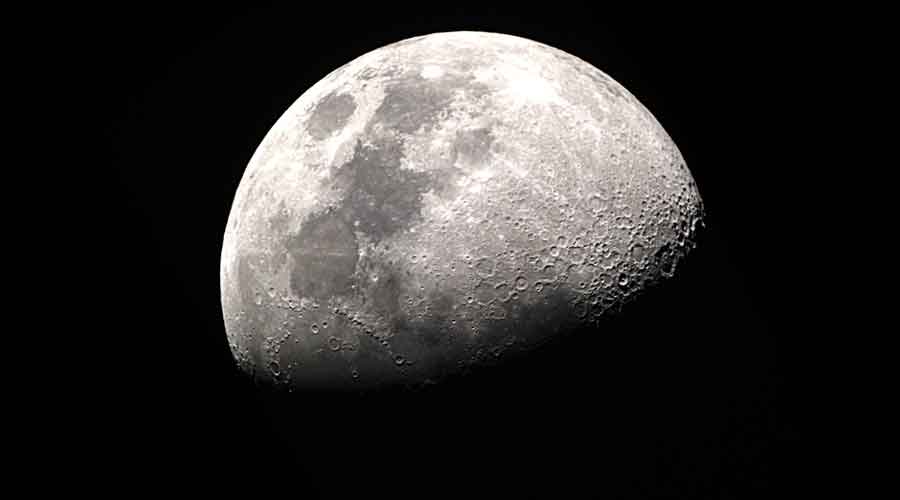US scientists on Monday announced their discovery of the first direct evidence of molecular water on the Moon, 11 years after India’s Chandrayaan-1 spacecraft had detected the signatures of a possible component of water.
Researchers at the National Aeronautics and Space Administration Goddard Space Flight Centre and other collaborating institutions in Hawaii and Colorado have detected a distinct infrared spectral signature that they say can only be explained through molecular water — or H2O.
Instruments aboard three spacecraft, including Chandrayaan-1, had in 2009 detected the signatures of hydroxyl (OH), a component of molecular water, but it was unclear whether the OH had emerged from water or other hydroxyl compounds.
Now, Goddard scientist Casey Honniball and her colleagues have used an infrared camera on a flying observatory aboard a Boeing 747 to observe a region in the Moon’s high southern latitudes near the Clavius crater and spotted the strong spectral signature of molecular water.
They have used their observations to calculate water concentrations ranging from 100 parts per million to 400 parts per million. They believe the water is probably stored in between dust grains on the lunar surface that protect it from the harsh environment.
In an independent study, US researchers at Colorado University have estimated that hidden pockets of water preserved in the lunar regions of permanent shadow, called “cold traps”, could be more common on the Moon than assumed.
Both findings appeared in the journal Nature Astronomy on Monday.
Paul Hayne at Colorado University and his colleagues examined the distribution of such cold traps across the lunar surface and found that small micro-cold traps, some only one centimetre in diameter, are hundreds to thousands of times more numerous than larger traps.
Their assessment suggests that around 40,000sqkm of the lunar surface can trap water.
“If we’re right, water is going to be more accessible for drinking water, for rocket fuel, everything that Nasa needs water for,” Hayne, an assistant professor, said in a media release from the university.
Studies suggest that the temperature in a cold trap could be minus 184°C. “The temperatures are so low in cold traps that ice would behave like a rock. If water gets in there, it’s not going anywhere for a billion years,” Hayne said.
Space scientists say the presence of water on the Moon would be significant from the perspective of future lunar missions, including ideas of establishing temporary research outposts on the Moon.
One scientist had in 2009 said that harvesting water from the lunar surface could dramatically reduce the costs of long-term human activities on the Moon. The scientist had estimated that it takes $50,000 to carry a litre of water to the Moon on a rocket.












